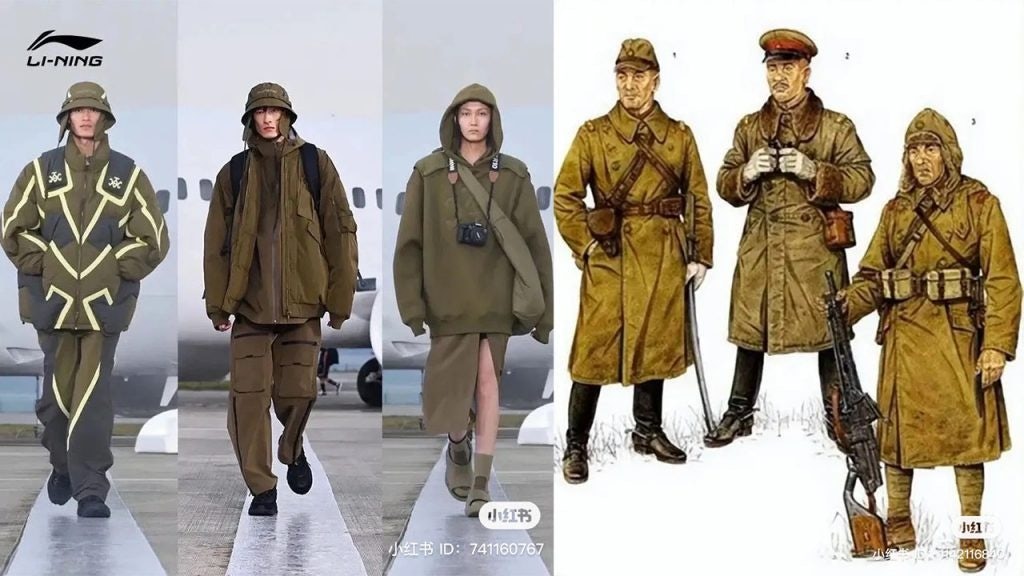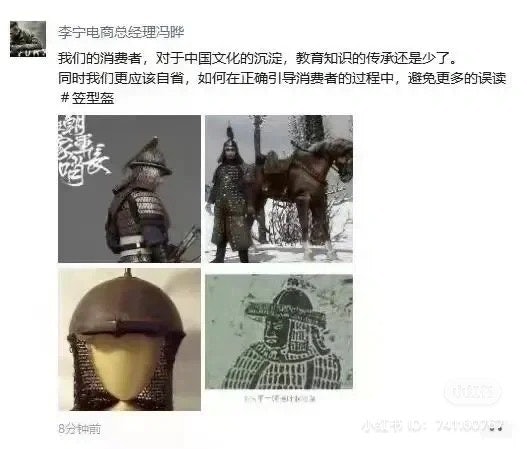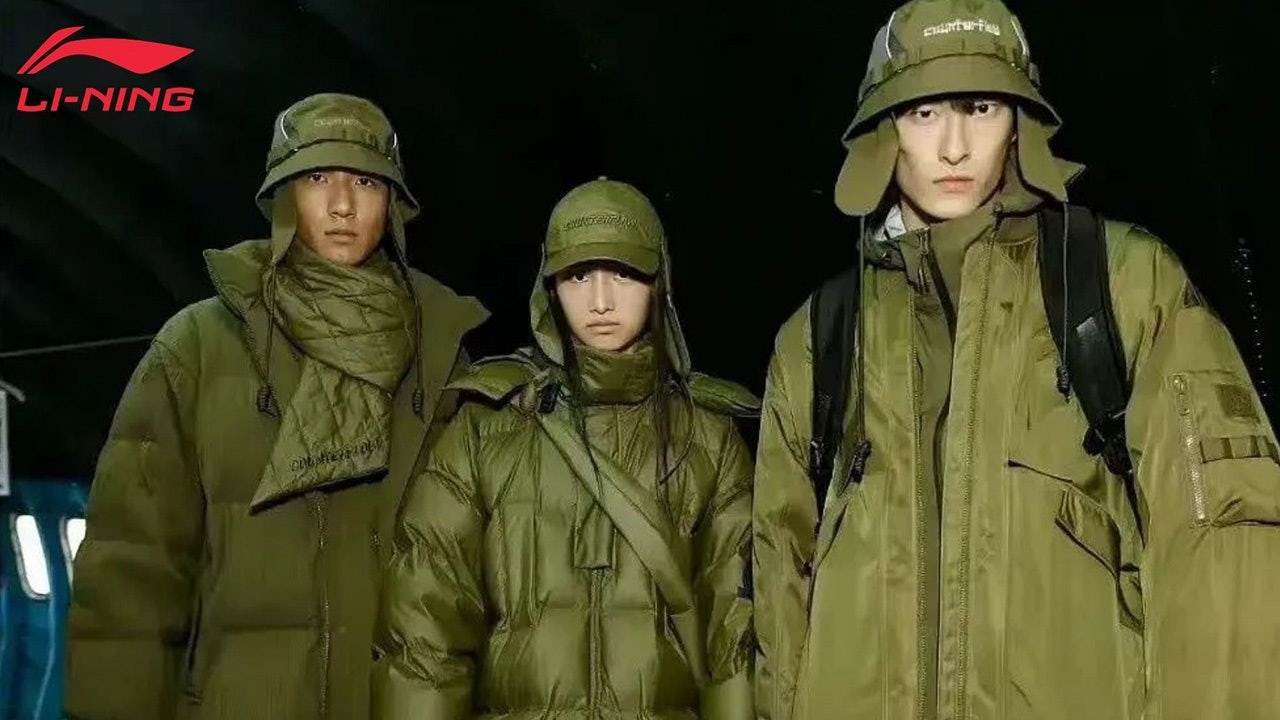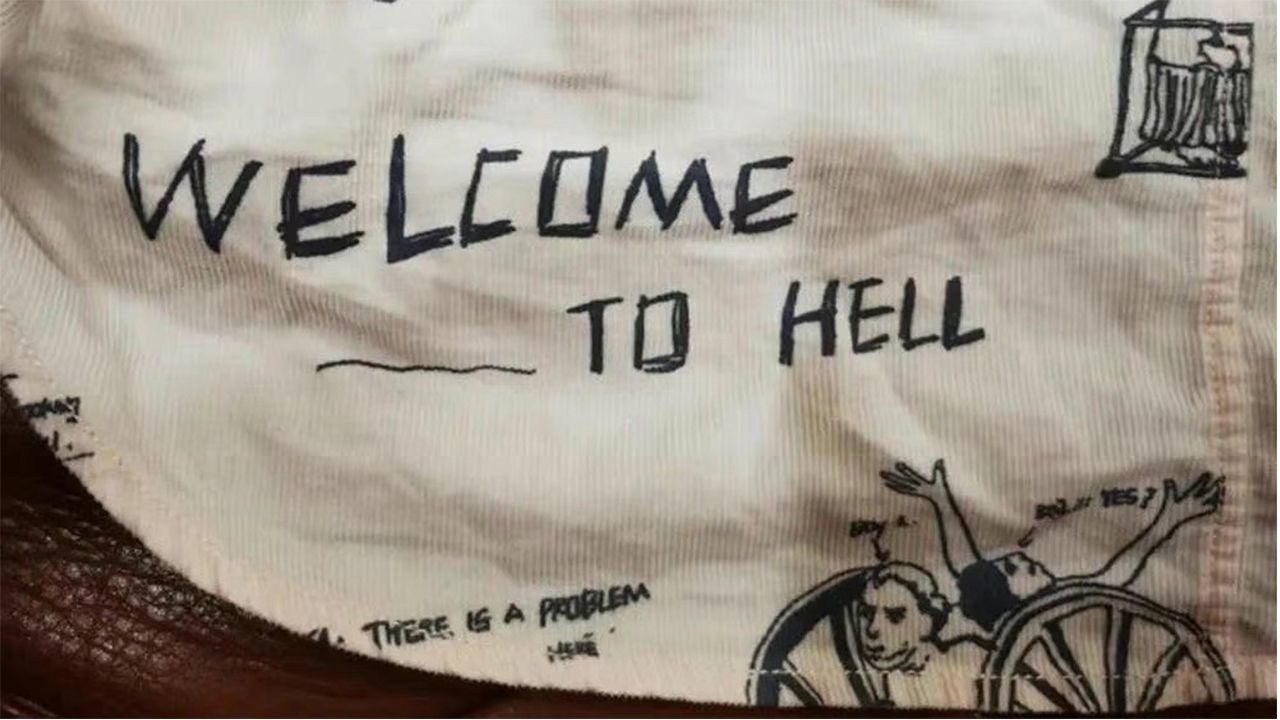Renowned Chinese sportswear brand Li-Ning caused an uproar on the Chinese internet last week. Several looks from its latest winter collection presentation — featuring navy green military-style jackets and headwear with neck and ear flaps — trended on Weibo. The garments were called out by netizens for resembling Japanese soldiers’ uniforms during the World War II.
In reaction to the backlash, related hashtags started trending on Weibo but were removed from the platform on the same day. This move further enraged netizens like Simon Zhu, a 28-year-old living in Chengdu, who wrote: “That’s the last thing Li-Ning should do if it wishes to win back consumer trust.” Given local consumer dissatisfaction, Li-Ning’s shares price plummeted over 13 percent on October 17.

Amber Wu, account director of the China-focused digital marketing agency Emerging Communications, explains: “It’s one thing to create cool and unique designs, but it’s another to sell this to the average consumer in China. The typical Chinese, having watched many movies and shows about the Japanese invasion of China, will actually be quite sensitive to this kind of war-time image. I’m actually surprised that, as a local brand, they failed to take into consideration the cultural context.”
Here, Jing Daily dives into Li-Ning’s controversy to investigate the impact of nationalism on a guochao brand’s business and how to handle or avoid any missteps.
How did Li-Ning handle the crisis?#
The PR nightmare was further escalated when the WeChat post of Ye Feng, Li-Ning’s head of e-commerce, started circulating online. In the post, Ye defended the designs, citing China’s Lixing hemet (笠型盔) — a round helmet with brim from the Ming Dynasty — as the inspiration behind the products. He then remarked that this scandal arose from “Chinese consumer’s lack of deep understanding of their own culture, and requires more education.” This response drew fierce criticism from online watchers who were awaiting for an apology instead of a rebuke.

Wu agreed that the C-suite’s response escalated the crisis. “From the very beginning of the crisis, they should have been a bit more humble, acted faster, and appreciated the feedback from consumers instead of trying to force the design concept onto consumers. It is more about handling consumers’ emotions than being rational.”
It was not until October 19 that the company apologized through its official Weibo account. Needless to say, this received mixed reactions from consumers. While some continued to boycott the brand stating that the apology came too late, others like @NoRegrets0 expressed their ongoing support for local establishments: “Please pay more attention to the designs. I still hope guochao brands can get better and better.”
How can similar backlash be avoided?#
In recent years, Li-Ning has emerged as a Chinese story of sportswear success and accelerated its expansion globally. In 2018, it debuted at New York Fashion Week and started collaborating with international emerging designers such as Scandinavian label Soulland. In a bid to upgrade itself into a global powerhouse and compete with top players like Nike and Adidas, the local house’s design team has shifted its focus to a global aesthetics.
Nearly 99 percent of the sportswear giant’s revenue comes from the Chinese market. As of September 30, the company has a total of 6,101 retail points across the country, a net increase of 164 compared to the previous quarter. With the mainland making up the majority of its demographic, Zhu believes that the intention was definitely not to provoke native shoppers. “It has no reason to do so. Instead, rather, I think there has been a lack of design review,” he said. In light of this, brands should consider using a visual auditing department to assess the potential risks of new designs before launching full collections.
What can other Chinese brands learn from this?#
Since the Xinjiang cotton backlash, local players such as Li-Ning, Anta, and Hongxing Erke have largely benefited from the rise of guochao or national sentiment. Over the last few years, domestic shoppers have turned their spending to these homegrown names in order to support them, and, in a sense, move away from international ones. Take for instance the German athleisure wear company Adidas, whose sales continue to decline in China; during the first quarter it experienced a remarkable 35 percent drop compared to the same period last year.
By marketing themselves as national brands, Li-Ning and other domestic businesses have won the hearts and pockets of locals. Yet, the name tag comes with high expectations too. As a representative of Chinese brands, each of their moves must reflect the country’s values and traditions. As this incident shows, it’s not just Western brands that can seem tone deaf to the sensitive Chinese market. However, given Li-Ning’s established reputation, the impact of the crisis should be temporary. Yet this serves as a warning for all homegrown brands: the guochao wave can turn on them too.


